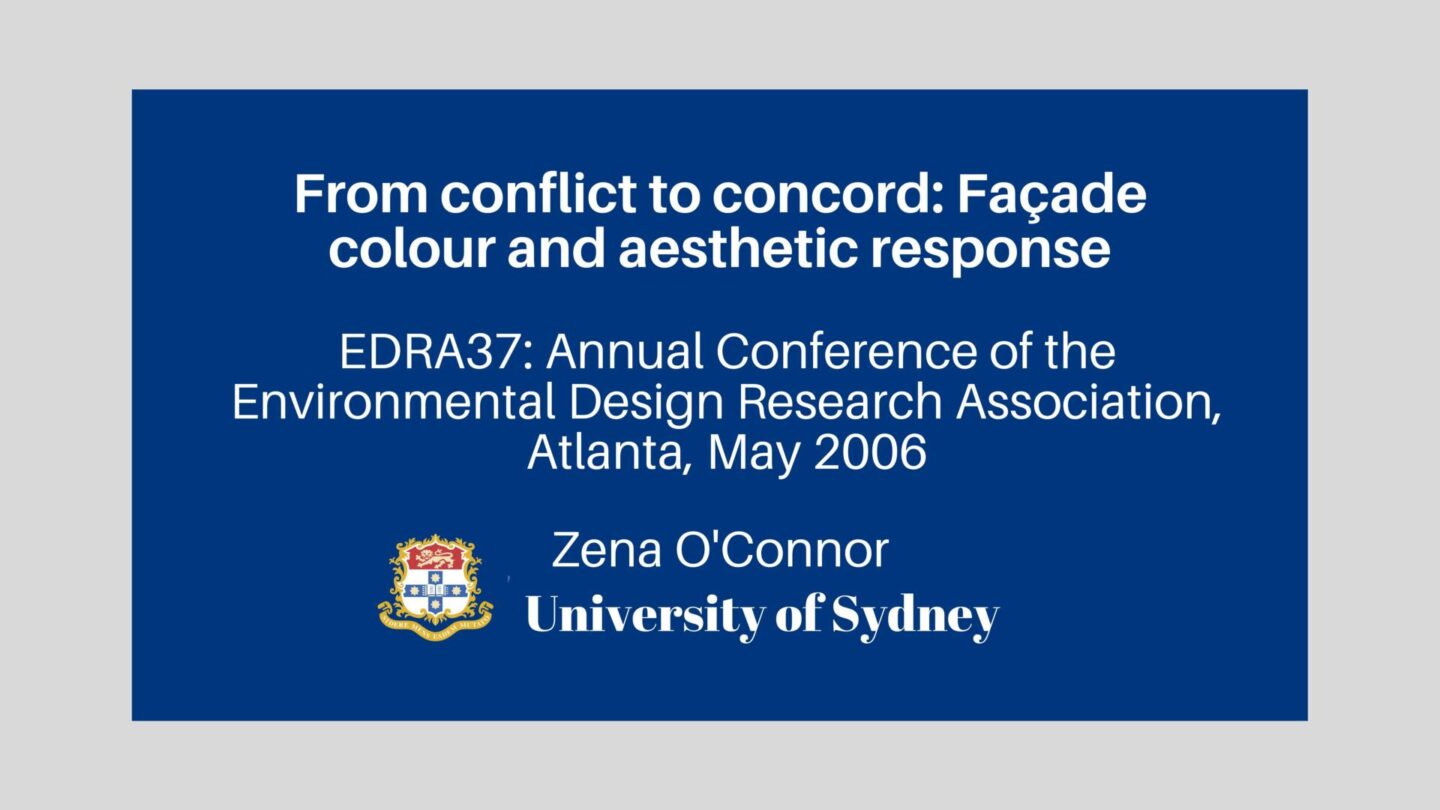
This peer-reviewed paper was presented at the EDRA conference in Atlanta in 2005.
Summary
Environmental color contributes to a ‘sense of place’ and the imageability’ or character of a particular region (Lenclos, 1982; Lynch, 1960; Porter, 1997). Façade color in particular is considered one of a number of building attributes that may contribute to aesthetic response to the built environment (Nasar, 1994). It is understandable therefore that planning instruments frequently include guidelines, references and directives relating specifically to façade color (Stamps, 2000).
In Sydney, as in other parts of the world, planning instruments often suggest that façade color should be harmonious or sympathetic in relation the surroundings. However, not only are these terms vague and ambiguous (Stamps, 2000); but they can lead to controversy and conflict. Few studies exist that focus on the relationship between façade color and aesthetic response, or the effect that façade color may have on judgments about the congruity or size of a building relative to its surroundings. This paper reports on a study that investigated the façade color within the context of Nasar’s (1994) probabilistic model of aesthetic response as well as current planning instruments in Sydney, Australia.